We’re going to try to tackle the topic of edible weeds in Georgia. We were fairly surprised recently about the unexpected bounty of potential food we have in our big front lawn. After a bit of research, we think this is a case of intelligent design rather that some kind of miracle.
Back Story
We’re tuned in at the moment to the interlocking topics of edible landscaping, and foraging for food in Georgia. It came to our attention that we need to be aware of the potential for finding alternate sources of food, in the event of some unforeseen catastrophe.
Also, as we point out, it gives us more respect for the early settlers and the native people. These groups forgot more than we will ever know about living off of the land here.
Also, keep in mind our attitude toward today’s food supply chain. This literally makes it a law that you have to buy food from a corporate food source. You can click the further link below about the “Georgia Food Safety Law” . The food industry and big pharma have some similarities.
Here are some links for your viewing pleasure:
Disclaimer
We have to keep reminding you that everything on this website is for entertainment purposes, and even if we say that one of these things is good for you, it’s your responsibility to check it out personally. Also, we don’t take any responsibility if you eat something weird that makes you sick.
That being said, there is a huge, trillion dollar industry set up to make you afraid to eat the food in your front yard. Also, there is a huge profit in keeping you that way, and also, suing anyone that tells you differently.
Edible Weeds in Georgia
So here is the story. The project was hatched recently to allow the front lawn to get shaggy. The underlying reason was to harvest dandelions, which were featured in the post above about edible landscaping.
The intent was to make some wine. You need to wait until the flowers turn white in order to harvest at the best time.
So we let the lawn get a bit out of control. Our place is a bit of a landmark along Highway 278, so we do like to keep it tidy, but it is easy to get distracted.
In the process of this, we took a walk around. We tried to identify some edible weeds in the front yard. Google Lens is not completely foolproof. But, we’ve been able to identify several more different kinds of edible plants that were literally growing below our feet, or up to our knees, as the case may be. This would be at the Firefly, bed and Breakfast in Madison GA.
Cleavers
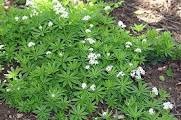
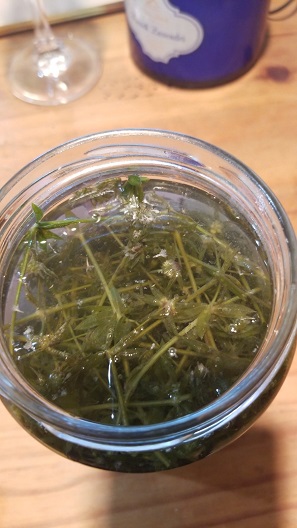
We were doing some work in a big pile of rocks the other day and a lot of this stuck to us. Cleaver is a low running vine plant, whose leaves are covered with little spikes. The plant can be harvested, and brewed into a tea, which we did. It has a mild, cucumber-like flavor. It is also edible in raw form.
It’s also known as “goose grass.” Because of the spikes, it doesn’t make the greatest salad. It’s common for this to grow on “waste land” next to gardens, or, at our place, on top of our priceless collection of busted up concrete which we have been gradually recycling.
Goose grass is thought to support the lymphatic system, according to the School of Homeopathy.
The tea is supposed to have some medicinal value. It can also be dried and ground into coffee.
Wood Sorrel
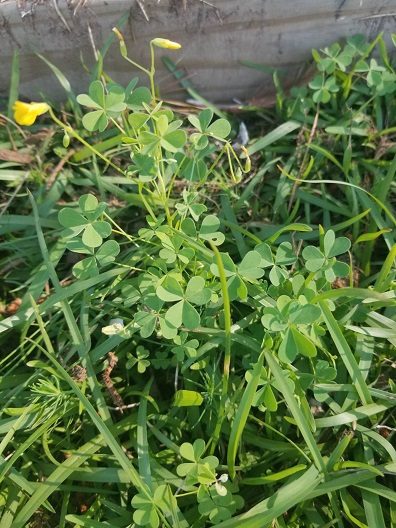
Wood sorrel (a type of oxalis) is an edible wild plant that has been consumed by humans around the world for millennia.[8] In Dr. James Duke’s Handbook of Edible Weeds, he notes that the Native American Kiowa people chewed wood sorrel to alleviate thirst on long trips, the Potawatomi cooked it with sugar to make a dessert, the Algonquin considered it an aphrodisiac, the Cherokee ate wood sorrel to alleviate mouth sores and a sore throat, and the Iroquois ate wood sorrel to help with cramps, fever and nausea.[8]
Wikipedia
The rest of these plants, by the way, are just freely growing in the front yard. But, because we keep it mowed, usually, we can’t usually identify them
Ribwort Plantain
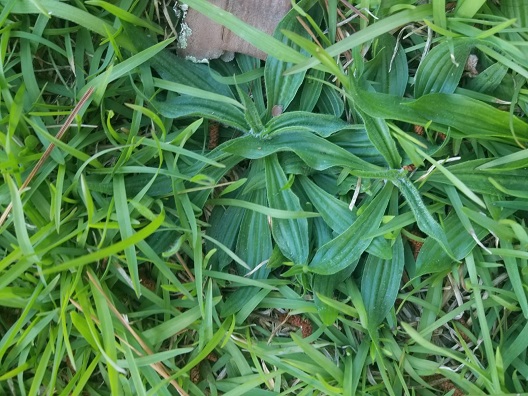
These purple looking things would normally be killed by some sort of broadleaf weed killer, but they’re edible. The plant is widely used in native medicines, according to the link below.
Ribwort Plantain has been used as an antibiotic, antihistamine, styptic, hemostatic and astirngent. In addition, it has been used to treat chest, gastric and eye conditions; constipation, irritated mucus membranes and muscles; stings, haemorrhoids; cystitis, and internal parasites, and as part of a snake bite treatment.
We suggest you check with your physician before eating excessive amounts of this.
Wheat
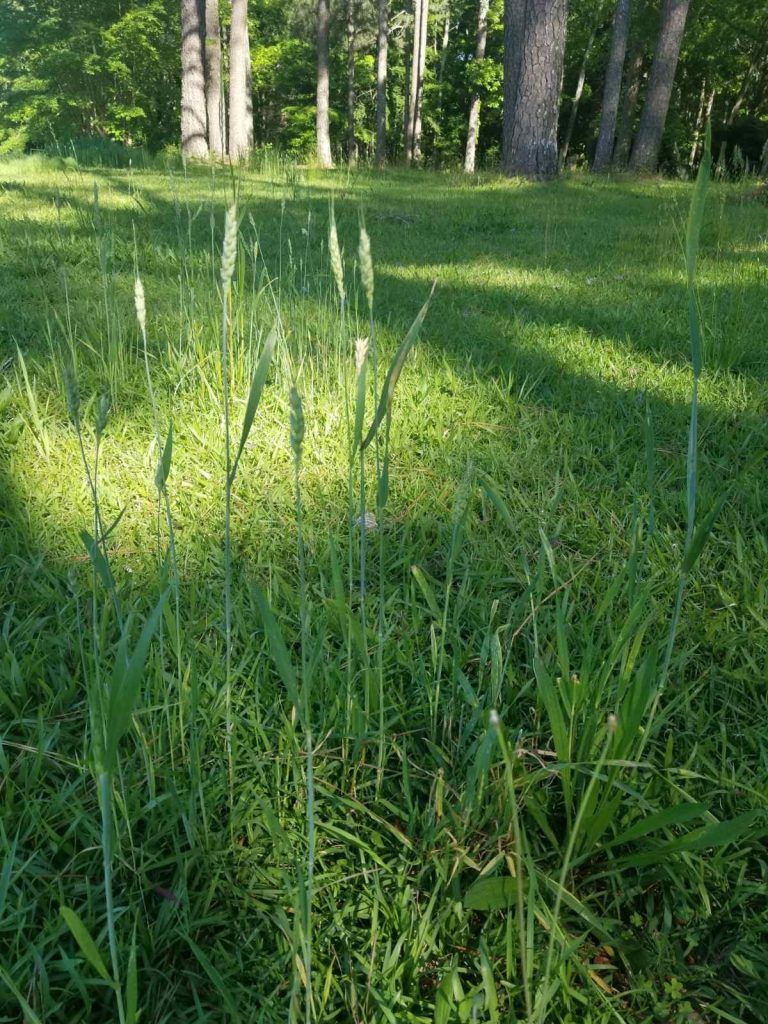
Wheat? How did that get there? Well that one is explainable because of the use of the chicken tractor. Wheat is a component of “scratch.” Do we have enough wheat in the front yard to make a loaf of bread? No probably not, but weissbier is a possibility if we can come up with a couple of pounds.
There is probably an underlying clue here as to how all of these edible plants got into the front yard.
The same is probably said for switchgrass and ryegrass.
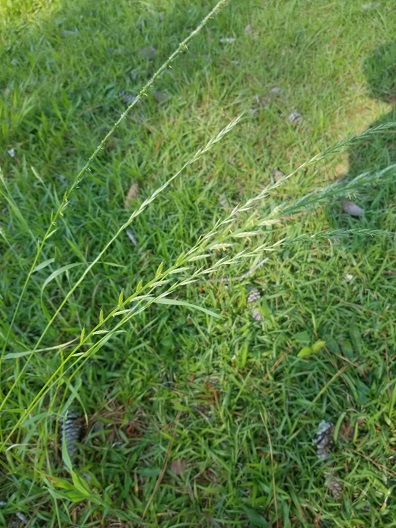
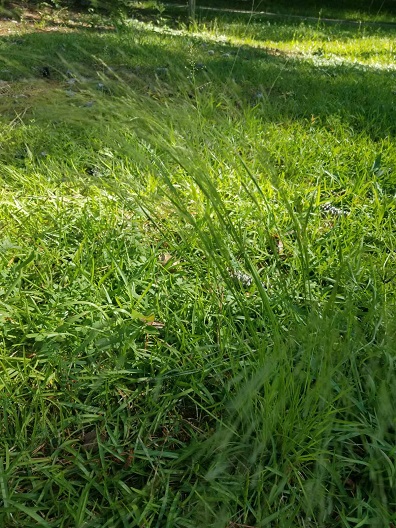
Purple Cudweed
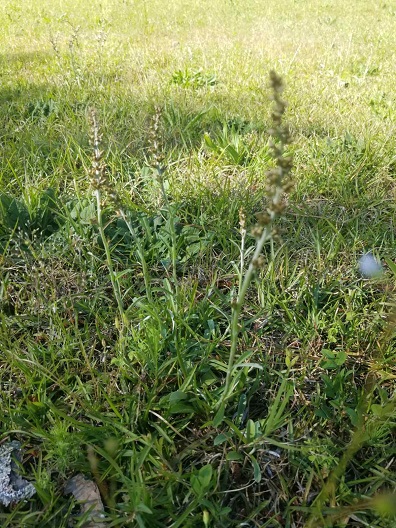
Better not eat this, because it is inedible. In the literature there is some reference to this as smokeable. The other common name for this is Rabbit Tobacco. It can be smoked or brewed into a tea, supposedly, to improve breathing, as if from a cold or other illness. Apparently the preferred technique is to draw the smoke into your mouth, rather than into your lungs.
The Common Vetch
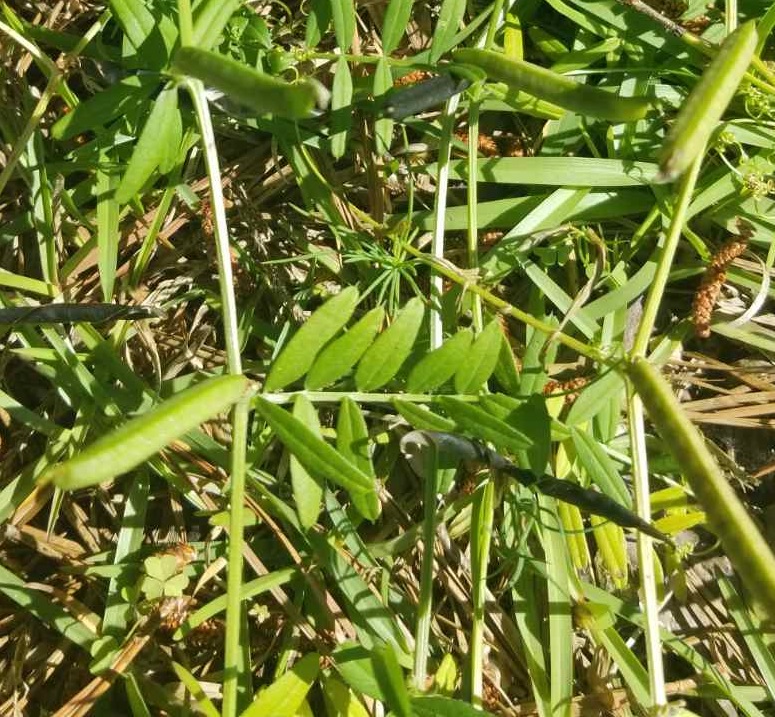
According to the literature, this plant was once cultivated, and actually is considered a potherb, which was deliberately grown for culinary use. This plant would have, by the end of summer, produced some little seed pods, which could have been harvested. The flavor of the plant is a lot like spinach or turnips.
The seeds can be dried and ground into a flour, which can then be used to thicken soups.
Creeping Indigo (Toxic)
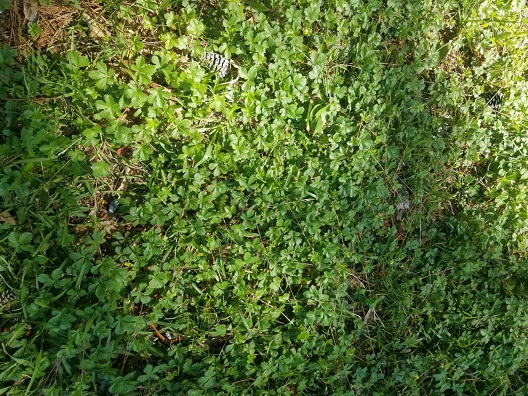
Firstly, here is one reason that you don’t want to go around eating weeds without some prior study. The creeping indigo is a low running plant that is toxic to humans and farm animals. This weed is a bit of a problem around Ocala where the horse industry is prominent. The plant can often spread below the surface of the pasture, and cause issues.
The preferred way of removing this is to hack it out with a tool or other device. Do you want that job? We don’t either because it sounds like work. We will let ours grow because of our sense of nature.
White Clover
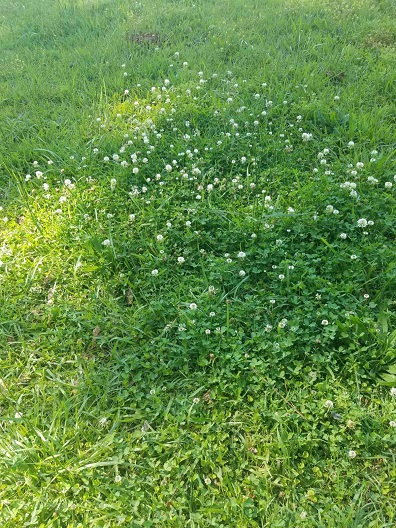
This is another one of these plants that in a monoculture is considered a weed, and dealt with severely. However, all parts of the plant are edible. Firstly it can be cooked like spinach, the flowers and seed pods can be eaten. Secondly, the plant can be ground into flour.
There is enough of this in the front yard to experiment if it evades the converters.
Birdsfoot Trefoil
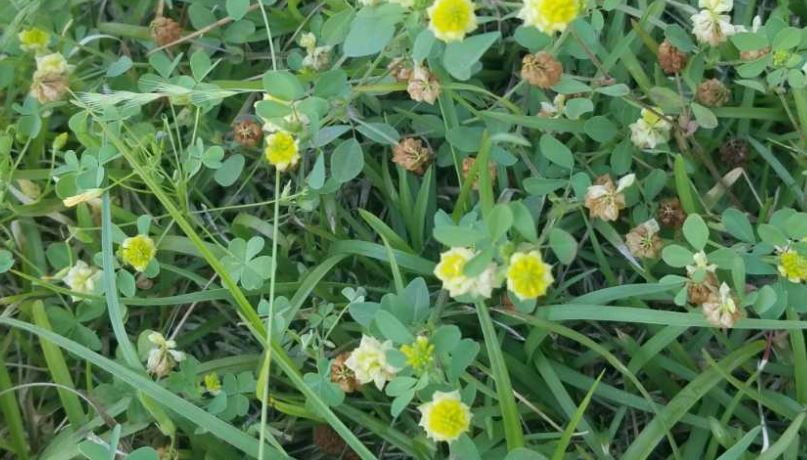
This one is a bit problematic. According to the reference from the football factory Penn State, this is considered a good forage plant for livestock but contains cyanide, which is poisonous to humans.
Do you now see the problem in gnawing on your front lawn? Trefoil, which is a geometric shape with three overlapping rings, means three leaves. The same can also be said for the clover, and for the wood sorrel, above.
Therefore it makes sense to consult a higher authority before trying to eat some of these edible weeds, even though they are a known desirable forage plant
Edible Weeds in Georgia: Intelligent Design
So we’re here, experiencing this big front lawn with a lot of edible weeds. The statement was made that we could probably live for a long time on these plants, if push came to shove.
How did it all get here? Well our theory of the moment is that it happened the same way as the wheat. Someone overseeded the whole thing with Pasture Seed Mix, of the type that you might buy at the Tractor Supply. Did they know that some of this is edible for humans? We’d have to say that was probably less of a thought at the time than a hardy, simple lawn idea.
The irony is that in the subdivisions this probably would be against the covenants.
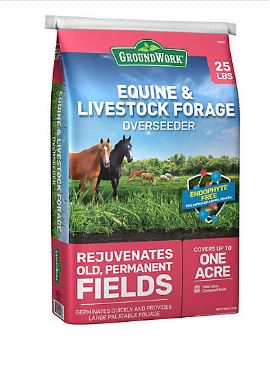
Does that make it any less edible? No, we’d have to say that a mix of seeds like this, containing a polyculture, is actually a good thing. Instead of the more uptight golf course look, we have been treated, by some previous owner of the place, to an edible abundance.
All we have to do is let it grow, which is to say, take no action and have food delivered to us. Is that a bad thing?
PS: Do you know what would be great?
Come and visit us. First, we will walk around the place, and point a few of these things out. It’s an educational experience. Then, we’ll go from there.
Links and References
Cleavers
https://www.ediblewildfood.com/cleavers.aspx
Wood Sorrel
https://en.wikipedia.org/wiki/Oxalis
Ribwort Plantain
Purple Cudweed
Common Vetch
White Clover
Birdsfoot Trefoil
https://extension.psu.edu/birdsfoot-trefoil
![]()
